Diabetes Medication Selector
Personalized Medication Recommendations
Answer a few questions about your health and goals to get tailored recommendations for diabetes medications.
Personalized Recommendations
Your health profile:
Recommended medications:
Key considerations:
When doctors treat type 2 diabetes, Metformin is a first‑line oral drug that lowers blood sugar by reducing liver glucose production and improving insulin sensitivity. It’s cheap, has decades of safety data, and works for most newly diagnosed patients. Metformin stays at the top of most guidelines, but many people wonder whether another pill might suit them better.
How Metformin Works
Metformin belongs to the biguanide class. It primarily acts on the liver, inhibiting the enzyme that creates glucose from non‑carbohydrate sources. A secondary effect is modestly increasing muscle uptake of glucose, which helps lower the HbA1c (the average blood‑sugar level over the past three months). Because it doesn’t stimulate the pancreas, the risk of low blood sugar (hypoglycemia) is minimal unless combined with another glucose‑lowering drug.
Key Factors to Compare
Before diving into alternatives, keep these dimensions in mind: efficacy (average HbA1c drop), side‑effect profile, impact on weight, cost, dosing convenience, and special considerations such as kidney function or heart disease.
| Drug | Typical HbA1c Reduction | Weight Effect | Hypoglycemia Risk | Cost (US$ / month) |
|---|---|---|---|---|
| Metformin | 0.8‑1.5% | Neutral to slight loss | Low | 5‑15 |
| Glyburide (Sulfonylurea) | 1.0‑1.5% | Neutral | Moderate‑high | 10‑20 |
| Pioglitazone (TZD) | 0.5‑1.0% | Weight gain | Low | 30‑50 |
| Sitagliptin (DPP‑4 inhibitor) | 0.5‑0.8% | Neutral | Low | 200‑250 |
| Semaglutide (GLP‑1 agonist) | 1.0‑1.8% | Weight loss | Low | 900‑1200 |
| Empagliflozin (SGLT2 inhibitor) | 0.5‑1.0% | Weight loss | Low | 300‑350 |
Sulfonylureas - Example: Glyburide
Glyburide belongs to the sulfonylurea family, which forces the pancreas to release more insulin. It can lower HbA1c by about 1‑1.5%, similar to Metformin, but the downside is a higher chance of hypoglycemia, especially in the elderly or those with irregular meals. Weight typically stays the same. Because it works on the pancreas, it’s not the first choice if you already have borderline low blood sugar.
Thiazolidinediones - Example: Pioglitazone
Pioglitazone improves how body tissues respond to insulin. It’s useful when Metformin alone isn’t enough. The HbA1c drop is modest (0.5‑1%). A common complaint is fluid retention and weight gain, which can aggravate heart failure. It’s also associated with a small risk of bone fractures in women.

DPP‑4 Inhibitors - Example: Sitagliptin
Sitagliptin blocks an enzyme that degrades incretin hormones, thereby extending insulin release after meals. It’s well‑tolerated, rarely causes hypoglycemia, and doesn’t affect weight. The glucose‑lowering power is lower than Metformin, usually under 1%. Cost is a major barrier, as the drug remains brand‑only in many markets.
GLP‑1 Receptor Agonists - Example: Semaglutide
Semaglutide mimics the gut hormone GLP‑1, boosting insulin, slowing gastric emptying, and reducing appetite. The result is a strong HbA1c drop (up to 1.8%) plus noticeable weight loss (2‑5kg on average). Injection is required once weekly, which some patients dislike. The price is high, but many insurance plans now cover it for high‑risk patients because of proven cardiovascular benefits.
SGLT2 Inhibitors - Example: Empagliflozin
Empagliflozin blocks the kidney’s re‑absorption of glucose, spilling excess sugar in urine. It lowers HbA1c by about 0.5‑1% and also promotes modest weight loss. The main safety concerns are urinary tract infections and, rarely, a condition called euglycemic ketoacidosis. It’s a solid option when heart or kidney protection is a priority.
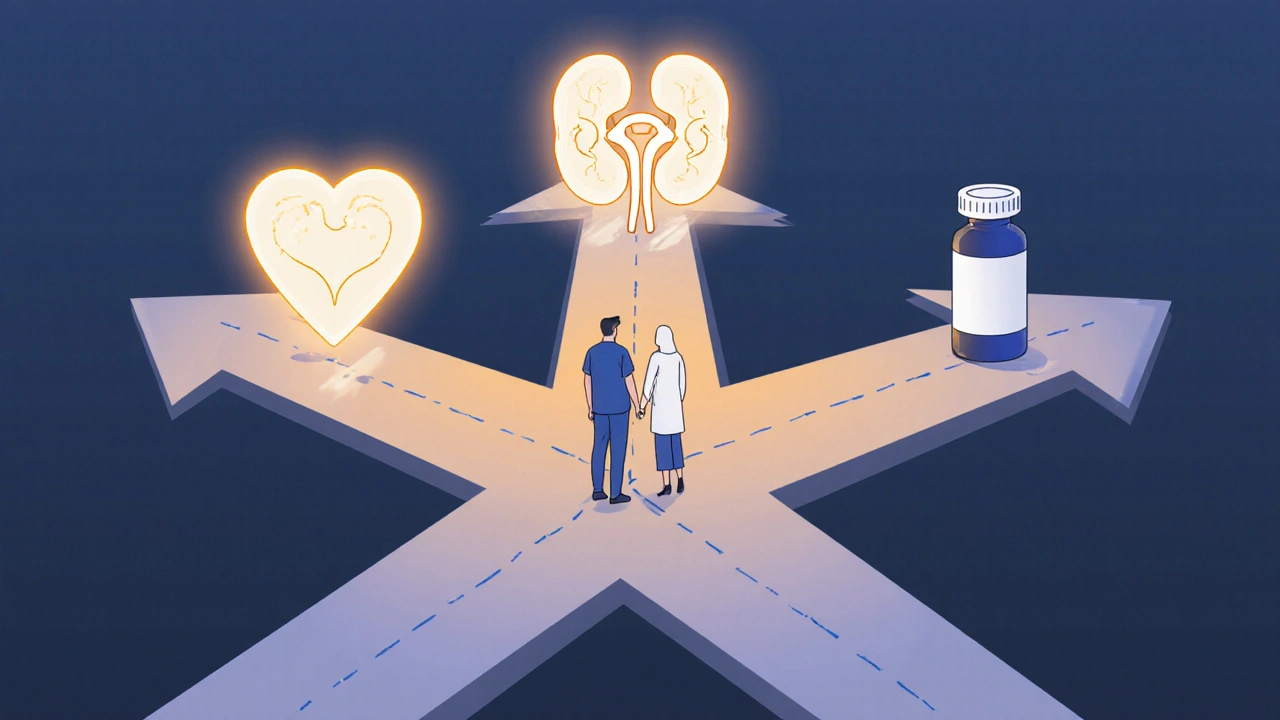
Choosing the Right Medication
The decision often starts with how much blood sugar you need to bring down. If you’re newly diagnosed and have decent kidney function, Metformin’s low cost and safety make it hard to beat. If you need extra weight loss, a GLP‑1 agonist like Semaglutide or an SGLT2 inhibitor may be worth the extra expense. For people who can’t tolerate Metformin’s gastrointestinal side effects, a DPP‑4 inhibitor such as Sitagliptin provides a gentle alternative.
Kidney health matters a lot. Metformin is usually avoided when the estimated glomerular filtration rate (eGFR) falls below 30mL/min/1.73m². In that scenario, an SGLT2 inhibitor or a low‑dose basal insulin may be safer.
Cardiovascular disease changes the calculus. Both Semaglutide and Empagliflozin have proven heart‑protective data, so they climb to the top of the list for patients with a history of heart attack or stroke.
Checklist for Patients and Clinicians
- Assess baseline HbA1c and desired target.
- Check kidney (eGFR) and liver function before starting Metformin.
- Discuss potential side effects: GI upset for Metformin, hypoglycemia for sulfonylureas, weight gain for TZDs.
- Consider cost and insurance coverage, especially for newer injectables.
- Review comorbidities: heart disease favors GLP‑1 or SGLT2 agents; heart failure may make SGLT2 the best choice.
Frequently Asked Questions
Can I take Metformin with other diabetes drugs?
Yes. Metformin is often combined with sulfonylureas, DPP‑4 inhibitors, SGLT2 inhibitors, or basal insulin to achieve tighter control. Your doctor will adjust doses to avoid low blood sugar.
What if Metformin gives me stomach upset?
Start with a low dose and take it with meals. A slow‑release version may reduce irritation. If problems persist, switching to a DPP‑4 inhibitor or a GLP‑1 agonist can be an option.
Is Metformin safe for people with kidney disease?
Metformin is contraindicated when eGFR is below 30mL/min/1.73m². Between 30‑45, a reduced dose may be used with close monitoring.
Do GLP‑1 agonists cause low blood sugar?
When used alone, the risk is low because they depend on rising glucose to trigger insulin release. The risk rises if you add a sulfonylurea or insulin.
Which drug helps with weight loss the most?
GLP‑1 agonists like Semaglutide typically produce the greatest weight loss, followed by SGLT2 inhibitors. Metformin may cause modest loss, while sulfonylureas and TZDs often lead to weight gain.


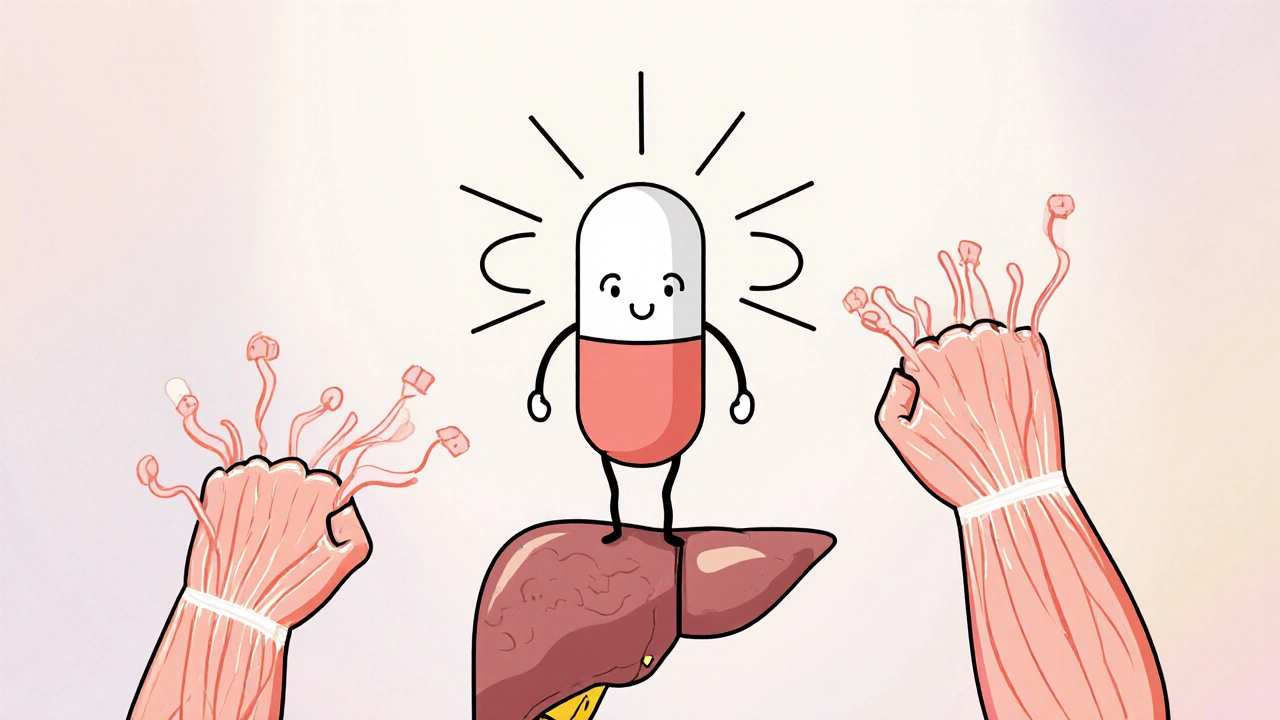

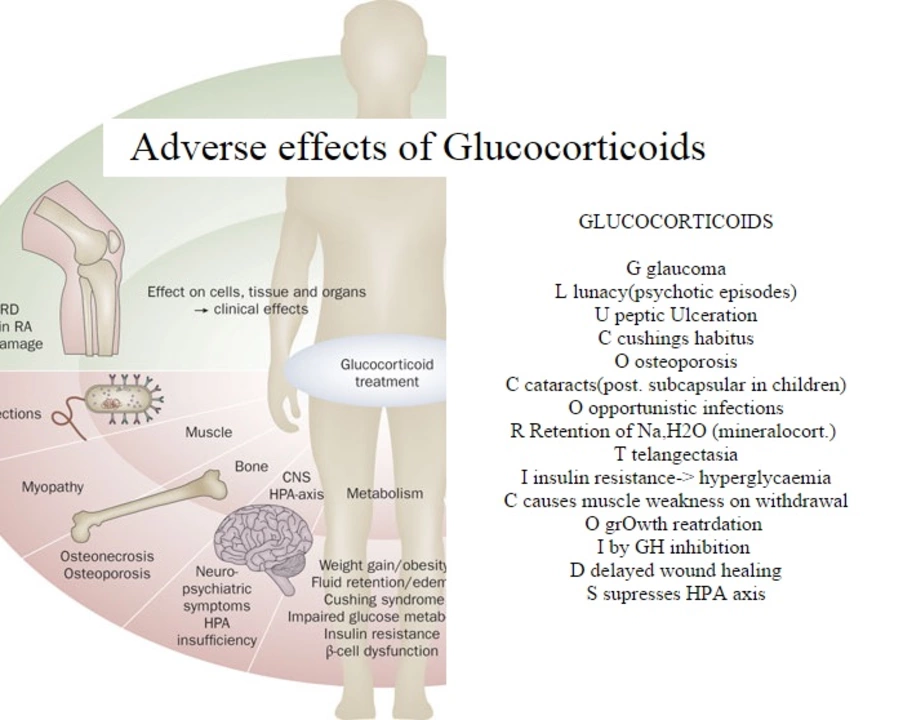
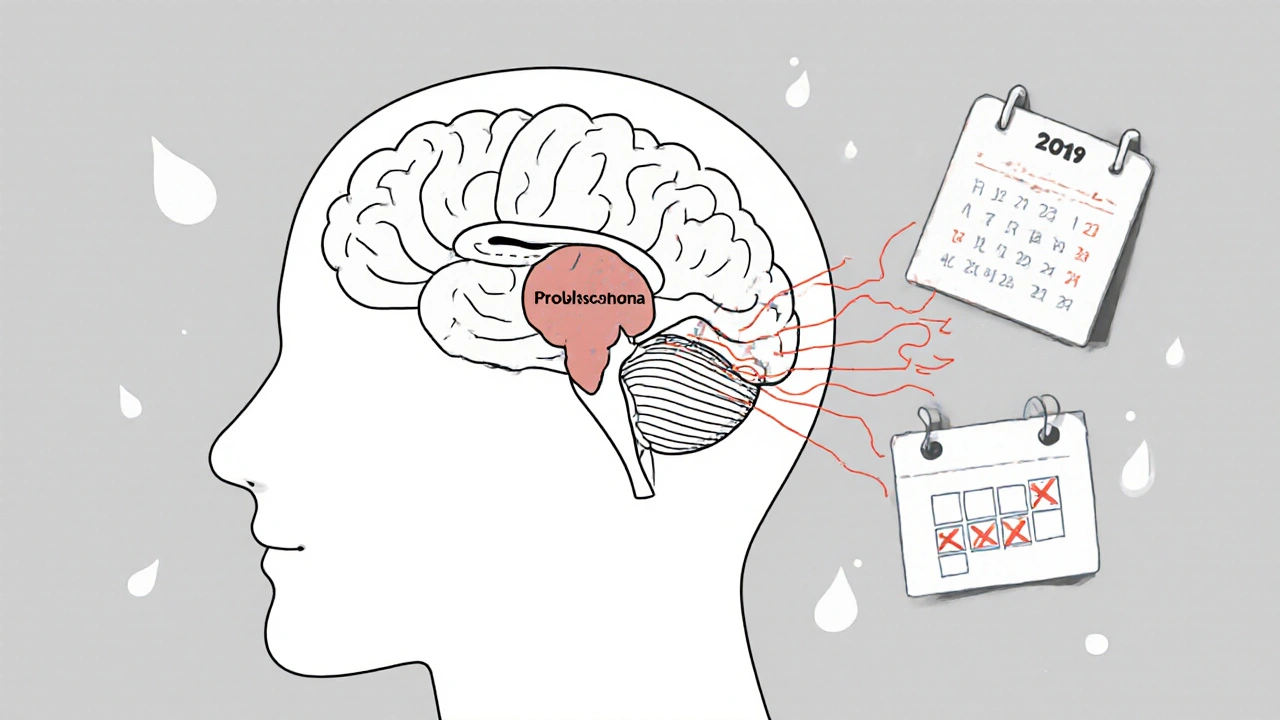
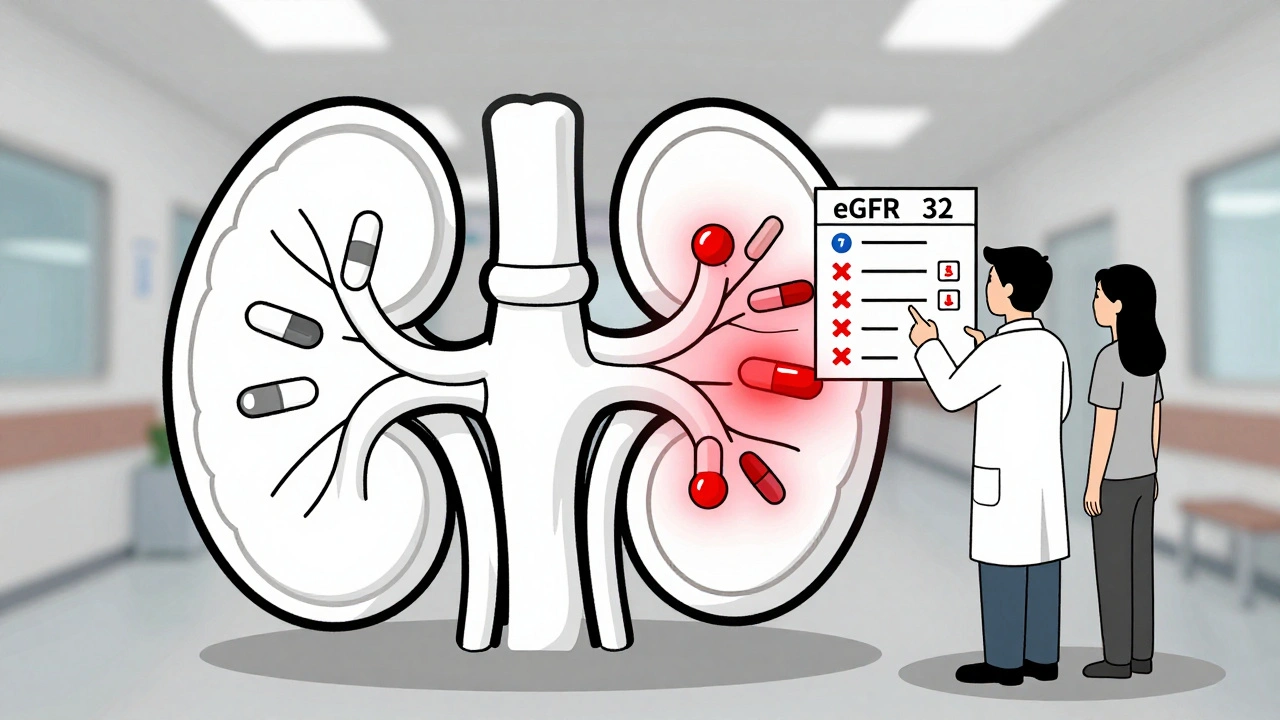


4 Comments